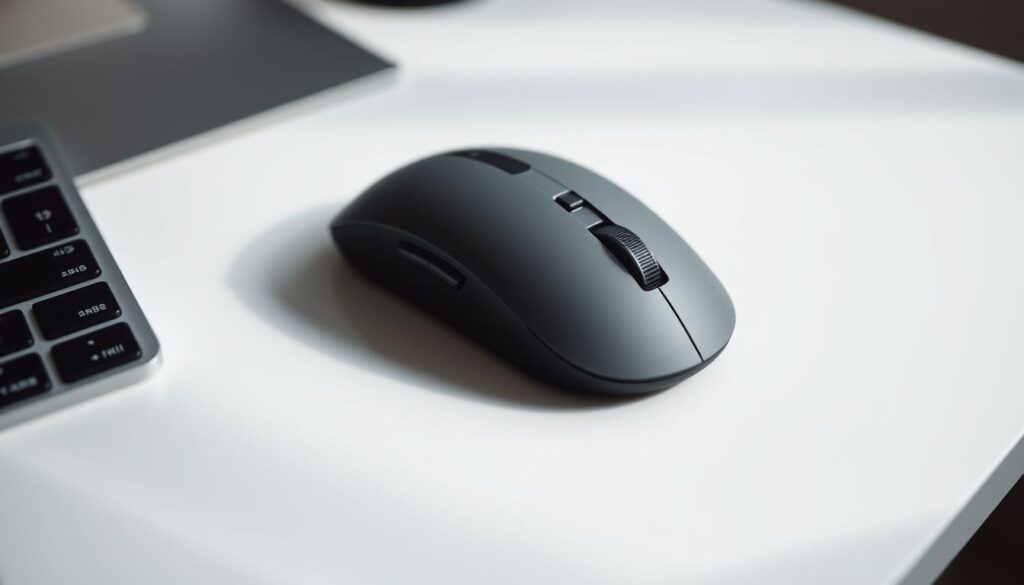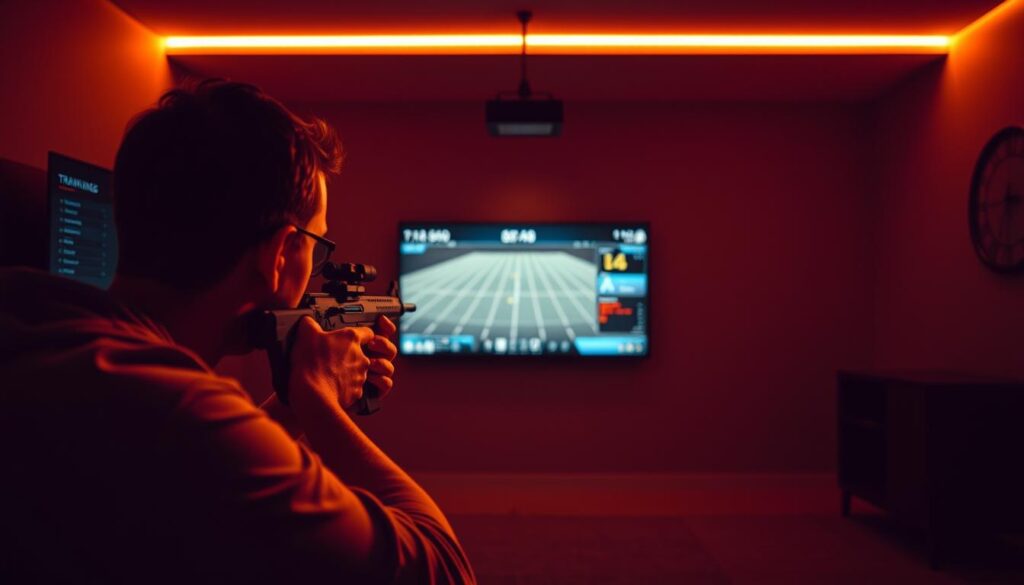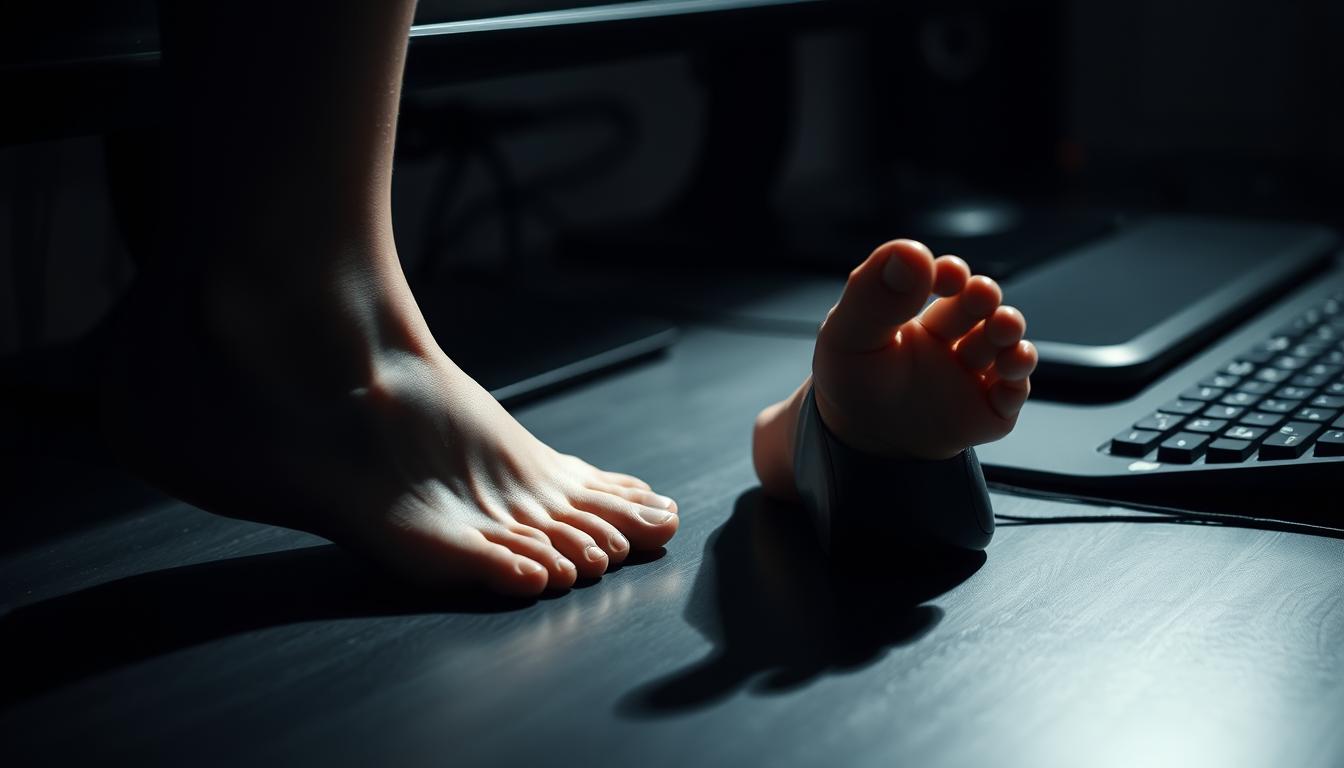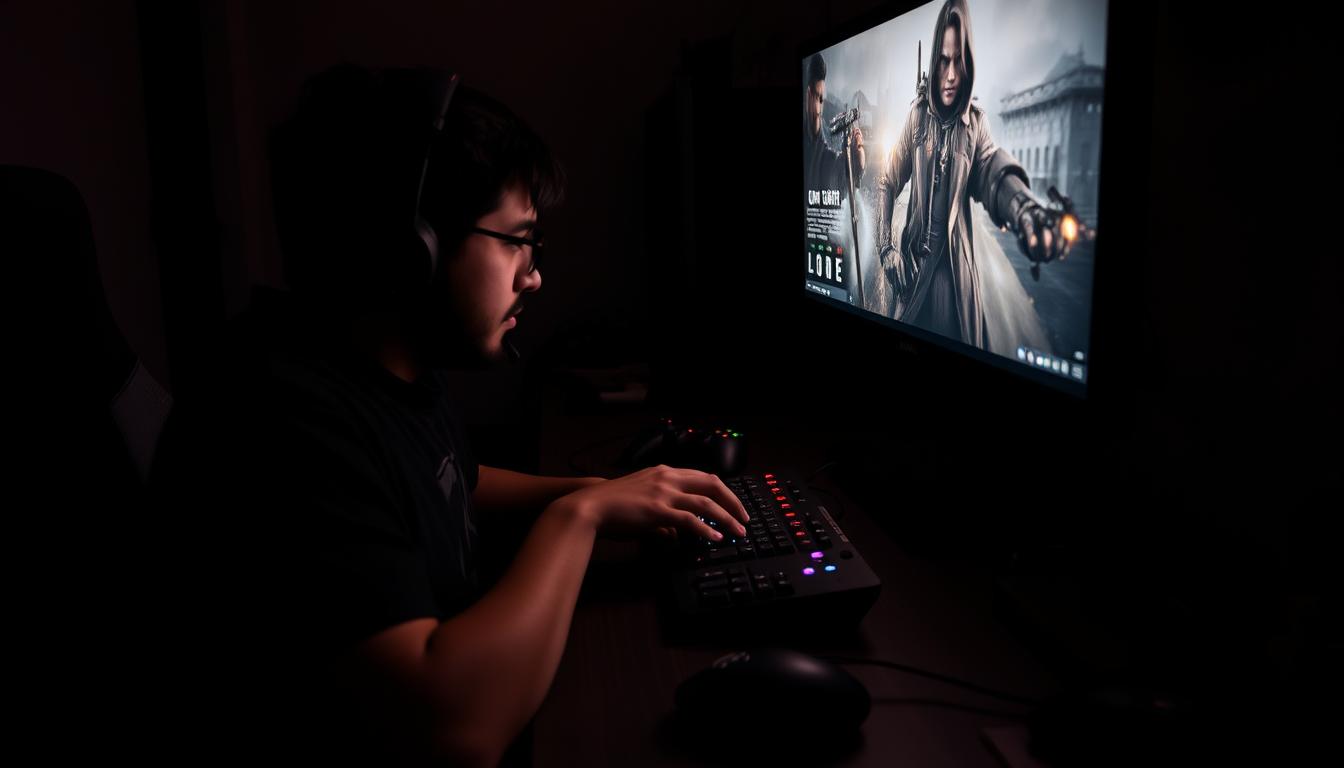Anúncios
Ever felt like finding the right sensitivity in FPS games is a challenge for left-handed players? It’s not just about numbers. It’s about how it affects your game and fun. Left-handed gamers face special hurdles because of their handedness.
Knowing how sensitivity affects aim is key to better gaming. We’ll explore how to find the perfect sensitivity for left-handed players. This will help them enjoy games more and perform better.
Anúncios
The Importance of Sensitivity in FPS Games
Sensitivity settings in FPS games greatly impact how players move around. Mouse sensitivity shows how much movement from the mouse translates to on-screen action. A player’s success often depends on their ability to aim accurately, making sensitivity a key choice.
Getting the right mouse sensitivity is crucial for quick reactions and smooth gameplay. If sensitivity is too high, players might overshoot targets, causing frustration. On the other hand, settings that are too low can slow down a player’s response, leading to missed chances. The best sensitivity is one that feels natural and comfortable for each player.
Muscle memory is also key in mastering sensitivity. Players may prefer certain settings based on their style, but it should still fit their hand dexterity and comfort. A well-fitted mouse shape can improve grip and reduce fatigue, boosting performance in competitive games.
Anúncios
| Sensitivity Setting | Effect on Aiming Accuracy | Recommended Use |
|---|---|---|
| High Sensitivity | May lead to overshooting targets | Quick reactions, fast-paced gameplay |
| Low Sensitivity | Hinders quick movements | Precision aiming, slower-paced gameplay |
| Medium Sensitivity | Balanced control and reaction time | General use for diverse gameplay styles |
Common Myths Surrounding Left-Handed Players
Many think left-handed players are at a disadvantage in FPS games. They believe using a right-handed mouse will hurt their performance. This often stops left-handed gamers from trying different setups.
But, many left-handed players do well with right-handed setups. Their success shows that skill and practice matter more than handedness. Some say left-handed players should only use left-handed devices. Yet, many adapt well to right-handed equipment without big problems.
Often, left-handed gamers face challenges because they don’t practice enough. Creating a space where they can try different setups can help. This way, left-handed players can reach their full potential.
Physiological Factors Affecting Aim Accuracy
Physiological factors greatly affect aim accuracy for left-handed players. Muscle coordination and fine motor skills are key for precise aiming. Left-handed people develop unique motor skills with their dominant hand. Mastering these skills can improve control and accuracy in FPS games.
The left hand often leads in physical tasks, shaping how players interact with games. Knowing the demands of muscle coordination can help players improve their strategies. For instance, training can focus on specific muscle groups for better aim accuracy over time.
Left-handed players might explore different techniques to adapt their movements. This adaptation requires understanding their physiological responses to gaming scenarios. By using targeted training, players can fine-tune their skills based on their unique physiology.
| Physiological Factor | Impact on Aim Accuracy |
|---|---|
| Muscle Coordination | Improves control over aiming movements, enhancing precision. |
| Fine Motor Skills | Facilitates quick and accurate movements in response to gameplay. |
| Dominant Hand Usage | Influences comfort and effectiveness in handling gaming tasks. |
| Aiming Techniques | Refinement of techniques based on unique physical abilities can boost performance. |
By focusing on these physiological factors, left-handed players can understand their strengths and weaknesses. Building on these insights will lead to better aim accuracy and success in competitive gaming.
Finding the Ideal Sensitivity Setting for Left-Handed FPS
Finding the right sensitivity setting is key for left-handed players in FPS games. It’s important to understand how DPI and sensitivity work together. Everyone is different, so settings need to be tailored to each player’s needs.
Understanding DPI and Sensitivity
DPI measures how far the cursor moves on the screen. Left-handed players often need to find a balance between DPI and sensitivity. A higher DPI can make movements quicker, but too fast can cause mistakes. Finding the right balance is essential for a great gaming experience.
Finding Your Personal Sensitivity Sweet Spot
Finding your personal sensitivity takes time and trial. Players should try different settings to find what feels right. Many find that a sensitivity of 1.55 to 1.60 at 450 DPI works well. Comfort, reaction time, and playstyle should guide these adjustments.
| Sensitivity Setting | DPI | Gameplay Focus |
|---|---|---|
| 1.55 | 450 | Balanced agility and accuracy |
| 1.60 | 450 | Enhanced precision |
| 2.00 | 800 | Fast movements, less precision |
Left-Handed vs. Right-Handed Setups
Choosing between a left-handed mouse and a right-handed mouse is key for left-handed gamers. Knowing the differences can make gaming more comfortable and effective. This is especially true during long gaming sessions.
Advantages of Left-Handed Mice
Left-handed mice are made to fit left-handed players’ natural grip. They are designed for comfort, reducing fatigue. This makes aiming smoother and more accurate, crucial in fast games.
Players using left-handed mice often feel more comfortable. They also see better gaming performance overall.
Challenges of Using Right-Handed Mice
Left-handed gamers face issues with right-handed mice. They often have to position their hands awkwardly, leading to discomfort. This can make gameplay less effective.
Right-handed features can also be hard to access. This can make aiming and reaction times worse in competitive games.
Adapting to Your Mouse Configuration
Getting used to a good mouse setup is key for better performance in FPS games. It takes time to get used to new sensitivity settings and button layouts. This is especially true when switching between different mice.
It’s important to find a balance between comfort and effectiveness. A well-set mouse helps you move smoothly, making your gameplay better. Changing your settings regularly can improve how fast you react, which is crucial in competitive games.
Don’t be afraid to try out different settings. Small changes can make a big difference. Everyone is different, so finding what works best for you is important for top performance.

Strategies for Improving Aim Precision
Improving aim precision for left-handed players needs specific strategies. Practicing flick shots boosts reflexes and accuracy. Tracking moving targets also helps, especially in fast games.
Aim training software offers structured practice. It has drills and metrics to track progress. Regular practice in different scenarios improves muscle memory and coordination.
Connecting with other gamers is also key. Sharing experiences and getting feedback can improve technique. Using this advice in daily practice helps build success skills.
Practice Techniques for Left-Handed Players
For left-handed players, honing skills through effective practice techniques is key. Focused drills can boost speed and accuracy, helping players aim better. Aim trainers are great tools for improving precision, offering a structured way to get better.
Playing custom games with bots lets players practice in different scenarios. This helps them get better at handling various in-game situations. By working on weaknesses in a controlled setting, players can improve a lot.
Setting specific goals during practice is helpful. It keeps players focused and motivated. Whether it’s aiming for better headshots or fewer misses, having goals helps. Regular practice helps players adapt to different sensitivity settings and builds essential skills.

Conclusion
Finding the right sensitivity settings is a personal journey for left-handed gamers. It depends on how well you can handle a controller and your own style. By understanding your body and debunking myths, you can get better at games.
It’s also key to keep practicing and tweaking your settings. Left-handed players can improve by adjusting their mouse and sensitivity. This makes you more accurate and confident while playing.
Left-handed gamers can keep getting better and break through barriers. It’s important to keep trying new things and adjusting your settings. For tips on improving your mouse, check out this resource. With hard work and flexibility, left-handed players can truly shine in their games.





